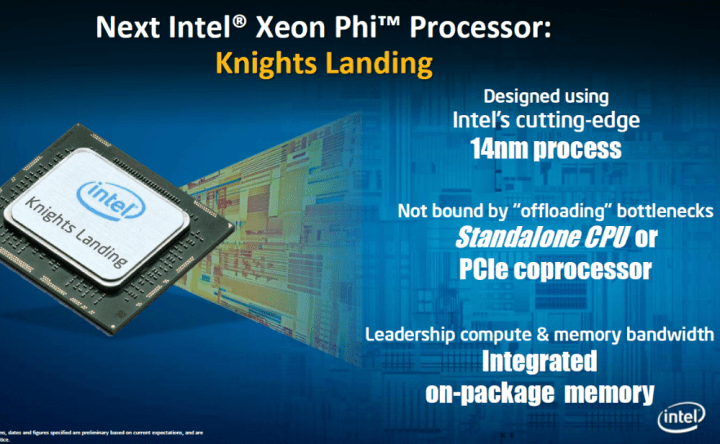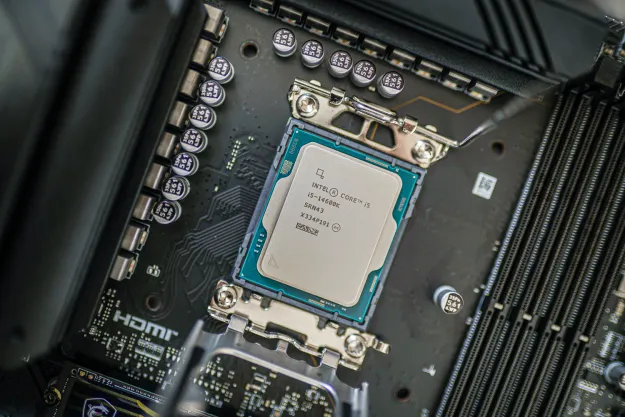
Boasting at least 60 cores (and some rumors put the count as high as 72), Knight’s Landing is the third revision of the company’s Many Integrated Cores architecture, which is officially branded Xeon Phi. Built to handle extreme computing tasks that require significant parallelism, the architecture is a competitor to Nvidia’s GPU compute parts and IBM’s Power 8 project, among others.
Details about the chip were scarce, but Intel recently took the wraps off some information at an event in Hillsboro, Oregon. Several figures stand out. The chip is slated to have over eight billion transistors, as many as the GPU in Nvidia’s Titan X, and should be good for three teraflops of double-precision performance (and double that in single-precision math). Despite the similarity in transistor count, the two differ in focus, as the Titan X only manages 200 gigaflops in double-precision, but about 7TFLOPS in single-precision.
The Knight’s Landing design also includes eight chunks of on-die memory that can deliver up to 400 gigabytes per second of bandwidth and support a maximum capacity of 16GB. These supplement DDR4 RAM, which offers 90GB/s of bandwidth, and Intel’s specifications show that Knight’s Landing can, at maximum, provide an incredible 400GB of RAM capacity (the 16GB with the chip, plus 384GB of DDR4). This aggressive two-tiered memory approach will seem strange to desktop users, but it’s necessary for a many-core chip such as this. Even the substantial capabilities of DDR4 could prove inadequate to feed the processor.
Intel also said the platform will include an on-die PCI Express controller with 36 lanes. That’s less than the X99 platform hosting Intel’s current high-end, eight-core consumer chips, but Knight’s Landing isn’t built to be used alongside numerous video cards. In any case, 36 lanes is still substantial.

Of course, this talk of PCI Express assumes the chip is used as a processor. Intel will also sell it as a co-processor on a PCI Express card. In that configuration it can be used to add compute capability to an existing system.
You’re not going to see this hardware show up in your desktop soon, as it’s meant for supercomputers and specific workstation applications. With that said, though, Intel says the chip will support both Linux and Windows, because the architecture is based on Intel’s Atom. The cores can handle all typical x86 instructions.
And who knows? While Knights Landing has a very specific focus today, it’s no secret that improving per-clock performance has become difficult. Further expanding parallelism is one way to overcome that roadblock. The Many Core Architecture probably won’t influence consumer chip design in three years, or even five, but lessons learned from it may one day trickle down to new desktop platforms with far more cores than we’re used to seeing today.
Editors' Recommendations
- It just became the perfect time to buy a last-gen Intel CPU
- Gamers are reportedly returning Intel Core i9 CPUs in droves
- The only Intel CPU you should buy is over a year old
- Everything we know about Lunar Lake, Intel’s big next-generation chips
- Reviewers agree: Intel’s latest chip is truly ridiculous


